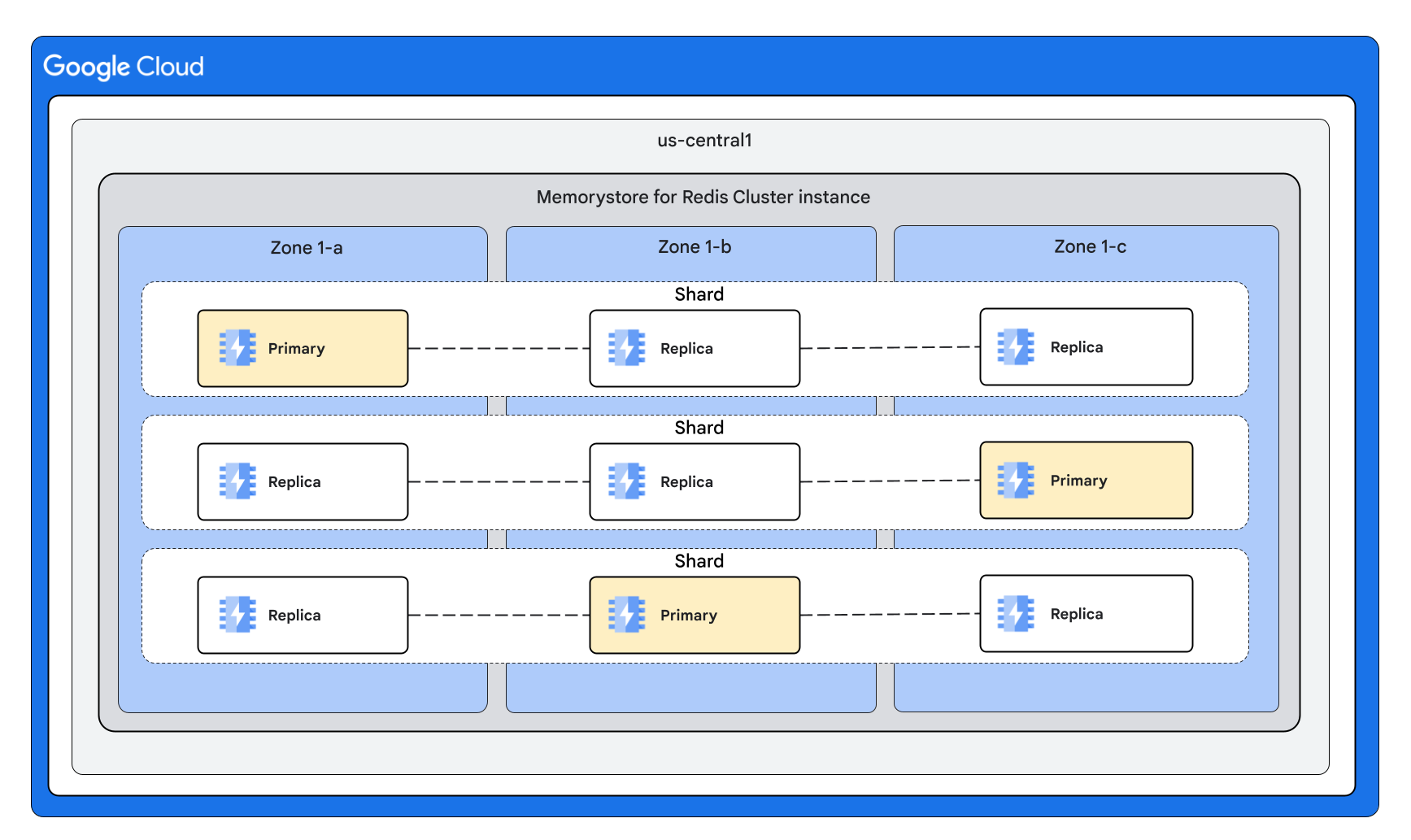Memorystore for Redis Cluster is a fully managed Redis service for Google Cloud. Applications running on Google Cloud can achieve extreme performance by leveraging the highly scalable, available, secure Redis service without the burden of managing complex Redis deployments.
Key concepts and terms
Hierarchical resource structure
Memorystore for Redis Cluster gathers the various resources used in a Redis deployment into a hierarchical structure that simplifies administration and management. Here is a diagram that illustrates this structure:

Memorystore for Redis Cluster instances are composed of a set of shards, each containing a subset of your key space. Each shard in a Memorystore cluster is composed of one primary node, and optionally up to two replica nodes. When replica nodes are added, Memorystore automatically distributes the nodes of a shard across zones to provide higher availability and throughput.
Instances
A Memorystore for Redis Cluster instance is a container for your data. The terms instance and cluster can be used interchangeably when referring to a single Memorystore for Redis Cluster unit of deployment. When provisioning a Memorystore instance, you must provision enough shards to serve the keyspace of your entire application.
For details about Memorystore cluster specification, see Cluster and node specification.
Shards
Your cluster is composed of multiple equally sized shards. For details about Memorystore shard specification, see Cluster and node specification.
Primary and replica nodes
There is one primary node per shard. Each shard can have 0, 1, or 2 replica nodes. Replicas provide high availability and additional read throughput, and are evenly distributed across zones.
For more details see High availability and replicas.
Redis version
Memorystore for Redis Cluster is based on open-source Redis version 7.x and supports a subset of the total Redis command library.
Cluster endpoints
Each instance has a discovery endpoint to which your client connects. Your client also uses the discovery endpoint for cluster node discovery. For more information, see Cluster endpoints.
Networking prerequisites
Before you can create a Memorystore for Redis Cluster instance, you must set up Networking for your project.
Billing
See the Pricing page for information on pricing for available regions.
